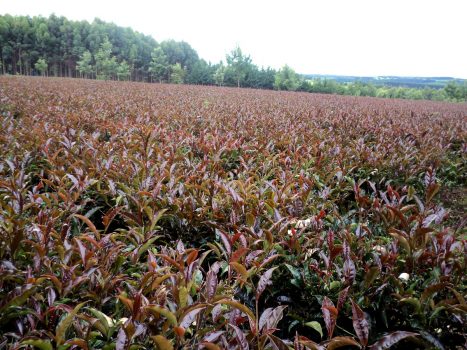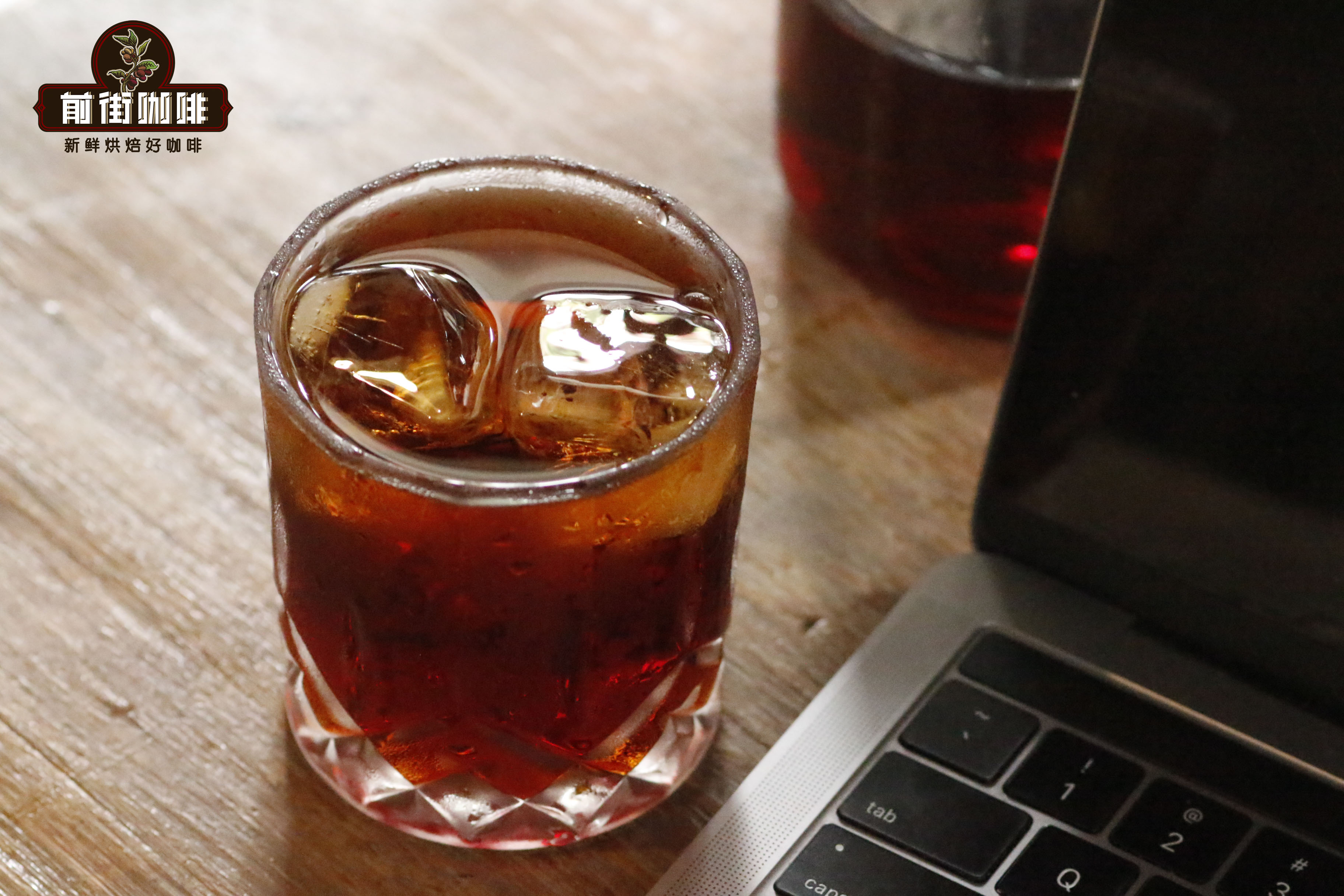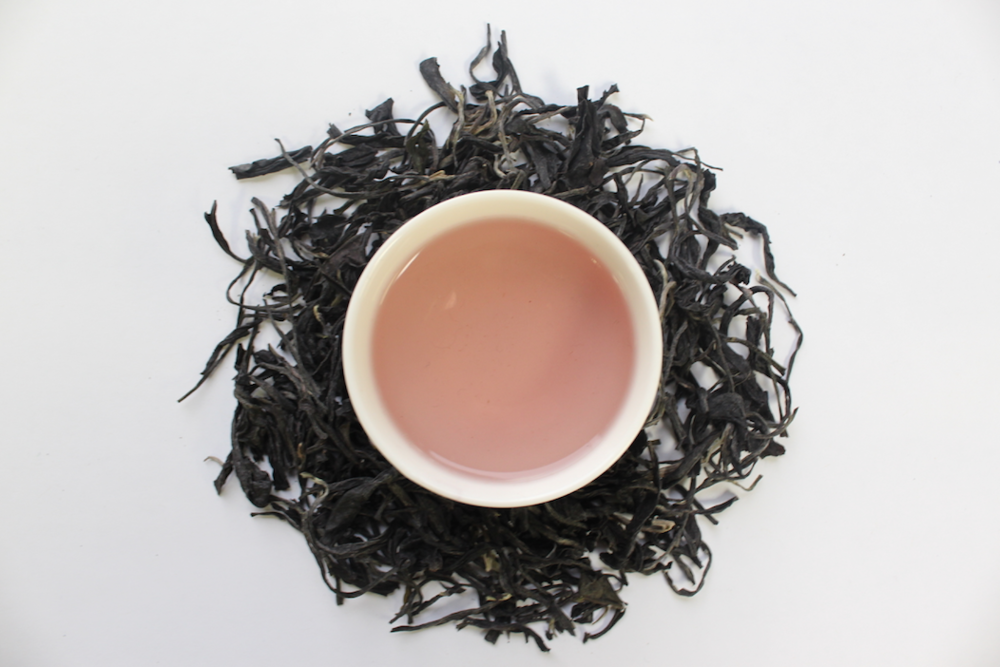What kind of tea does Kenyan purple tea belong to? The reason why Kenya purple tea soup is purple where can I buy authentic Kenya purple tea?
Purple tea is grown in Kenya and is the only known variety to contain anthocyanins, the flavonoids that give blueberries and pomegranates their purple color. The Tea Research Foundation of Kenya (TRFK) developed the new purple variety 25 years ago, and small-scale Kenyan farmers planted seedlings in 2011. Purple leaf tea is a variety of Camellia sinensis. It's called purple tea because of the purple leaves that grow in Kenya's tea plantations. This is not a genetically modified plant; it is completely natural and belongs to the Camellia Sinensis Assamica family. As part of this unique tea history.

A variety of camellia having leaves that are green at first and turn purple when mature. Its leaves are not only purple, but also uniquely soaked in a pale gold extract, the purple color visually enhanced with a squeeze of lemon juice. It naturally does not belong to any other tea category, so the new category purple tea was created specifically for it. The taste is similar to white tea. The tea soup tastes moderate, elegant, herbal, round and slightly sweet. Purple tea grows at high altitudes (more than 6000 feet). Although the Kenya Tea Research Foundation bred the variety 25 years ago, the first seedlings were not planted until 2011. Small-scale farmers must be persuaded to commit themselves to growing gardens for a full five years without any monetary reward, which is the time required for plants to mature and be ready for initial harvest and production. Strictly abide by the standard of picking two leaves and one bud. Purple tea is produced in small batches using only the best tea leaves. When you buy purple tea, you will benefit Kenyan farmers, helping to provide new opportunities for sustainable growth and employment for their families and communities.
Important Notice :
前街咖啡 FrontStreet Coffee has moved to new addredd:
FrontStreet Coffee Address: 315,Donghua East Road,GuangZhou
Tel:020 38364473
- Prev

Don't regular coffee drinkers order takeout? is there a market for takeout coffee to make money? Wuhan takeout coffee sales have tripled.
This is the worst of times and the best of times, and the same is true in the case of coffee. In the past, when it came to drinking coffee, many people chose to go directly to a coffee shop, but today, there is not necessarily a single scene of "coffee shop" if you want a good cup of coffee. Take Chestnut: you may drink coffee in Uniqlo; you
- Next

What kind of tea does purple tea belong to? Which producing area does Kenyan purple tea taste good? What is the function and effect of purple tea?
What is purple tea? We are all familiar with all kinds of tea, such as black tea, green tea, oolong tea and so on. But have you ever heard of purple tea? Purple tea combines the health characteristics of green tea and black tea, adds new and unique health benefits, and provides farmers with opportunities to increase their income. So what on earth is purple tea? Purple tea and other teas
Related
- The milk tea cup becomes smaller?! Overlord Tea Girl launches a new "Return to Yunnan" series
- Accused of selling counterfeit and high-priced coffee beans! Well-known boutique coffee brand "Oukelao" bowed and apologized!
- How to make espresso dumplings? Can I eat coffee and glutinous rice balls together?
- Save the unformed and stagnant powder cakes in one second! What is the problem with stagnant water in the powder bowl of the espresso machine?
- What does hand-brewed coffee stop mean? Why is it not recommended to make coffee by hand?
- Is it normal to smell like coffee? Why does coffee smell like alcohol? What's wrong with the strong smell of cold extract ice dripping ice brewed coffee?
- How to solve the problem that hand-brewed coffee extraction takes too long? Why is the water flowing so slowly when making coffee?
- The main points of making Australian white coffee, the proportion details, how does Australian white properly foam and blend the flowers?
- Can ice water make cold extract coffee? What is the difference between room temperature water and ice water for making cold coffee?
- What milk is best for making latte and white Dirty coffee? What is the difference between different brands of fresh milk and pure milk for making coffee?

